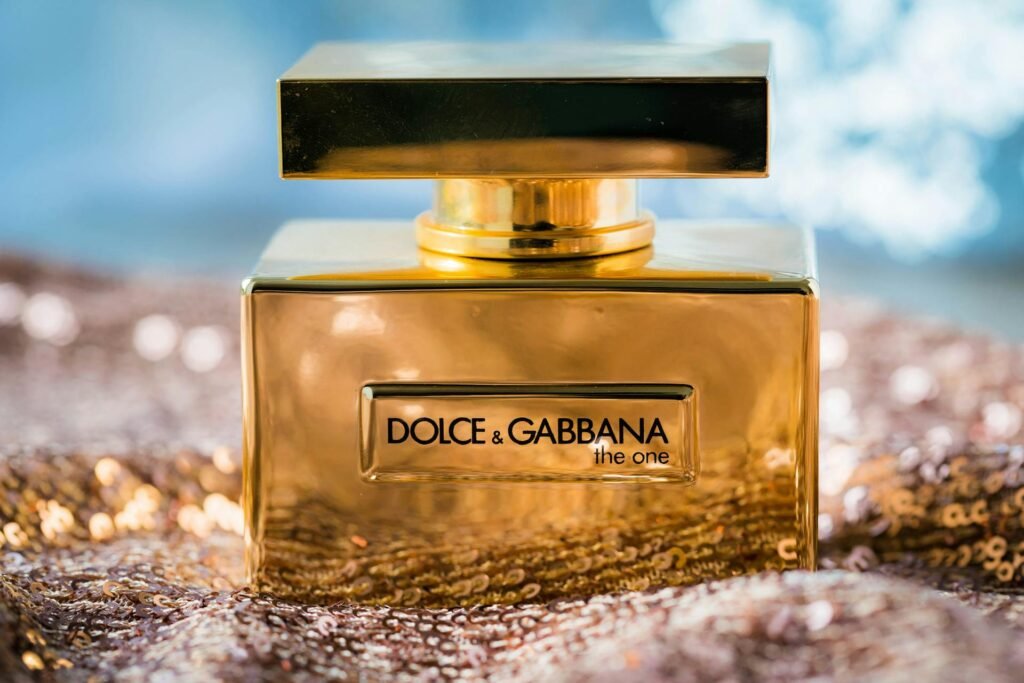
I. Introduction: The Unique Challenges of International Perfume Shipping
When delving into how to ship perfume internationally, one quickly realizes the distinct hurdles that come with this task. Understanding these challenges is crucial for anyone engaged in exporting perfume from China.
1. Why is Perfume Classified as a “Dangerous Good”?
Perfumes are classified as “dangerous goods” primarily because of their high alcohol content. Typically, the alcohol content in perfumes exceeds 60%, categorizing them as flammable liquids, specifically falling under IATA Class 3 dangerous goods. This classification implies that for international transportation, strict compliance with air and sea freight dangerous goods regulations is a must. Regulations such as the IATA Dangerous Goods Regulations (IATA DGR) for air transport and the International Maritime Dangerous Goods Code (IMDG Code) for sea transport must be adhered to. These regulations are designed to ensure transportation safety, and non – compliance can lead to severe consequences.
2. Common Pain Points
One of the prevalent issues in shipping perfume internationally is that major express carriers often reject such shipments. For instance, well – known courier services like DHL, FedEx, and UPS have a policy of embargoing perfumes containing alcohol. This significantly restricts the available shipping options. Additionally, there is a high risk of packaging leakage. Given perfume’s nature as a liquid, often packaged in high – pressure atomizer bottles, ensuring proper packaging to prevent leakage is a constant worry.
Moreover, the high customs clearance failure rate adds another layer of complexity. Customs authorities worldwide are vigilant about dangerous goods, and any non – compliance in documentation or packaging can result in shipment rejection. All these factors make grasping how to ship perfume internationally a complex endeavor.
II. Comparison of Compliant Shipping Methods: Sea Freight vs. Air Freight vs. International Express
When contemplating how to ship perfume internationally, it’s essential to understand the different transportation methods available and their suitability for perfume shipments.
| Method | Applicable Scenarios | Advantages | Disadvantages |
|---|---|---|---|
| International Express | Shipments less than 45kg | Door – to – door service and excellent tracking | General customers may refuse to receive the goods |
| International Air Freight | Medium – batch shipments from 45 to 500kg | Fast delivery (5 – 10 days) | Requires self – pick – up at the port of destination and self – customs clearance, high cost |
| International Sea Freight | Large – batch shipments over 500kg | Lowest cost (about one – third of air freight) | Slow delivery (25 – 45 days), requires dangerous goods declaration |
International Express
For small – batch shipments weighing less than 45kg, international express can be a consideration when figuring out how to ship perfume internationally. The advantage of international express lies in its door – to – door service and a well – developed tracking system. However, it should be noted that due to perfume being a dangerous good, some customers may be reluctant to accept such shipments, which is a significant drawback.
International Air Freight
When dealing with medium – batch shipments ranging from 45 to 500kg, international air freight becomes relevant. The key advantage here is the relatively rapid delivery time, usually taking only 5 to 10 days. This can be crucial for time – sensitive orders. Nevertheless, there are some drawbacks. Shippers need to arrange for self – pick – up at the port of destination and handle customs clearance independently, which can be complex and time – consuming. Additionally, the cost of air freight for perfume, especially considering its classification as a dangerous good, is relatively high.
International Sea Freight
For large – batch shipments exceeding 500kg, international sea freight is often the most cost – effective choice when exploring how to ship perfume internationally. Sea freight offers the lowest cost, approximately one – third that of air freight. However, it has its own set of challenges. The delivery time is much slower, typically ranging from 25 to 45 days. Moreover, shipping perfume by sea requires proper dangerous goods declaration, which adds an extra layer of administrative work.

III. Detailed Explanation of the International Perfume Shipping Process
Shipping perfume internationally involves a detailed procedure. Here’s a breakdown of each step to help you better understand how to ship perfume internationally.
1. Pretreatment and Packaging (Core!)
Pretreatment and packaging are of utmost significance when shipping perfume internationally.
Leak – Proof Treatment
Each bottle of perfume should first be individually sealed. Subsequently, it should be wrapped with six layers of bubble wrap to provide adequate cushioning. Then, place the wrapped bottle into a leak – proof bag. To further safeguard against leakage, fill the surrounding space with absorbent materials such as cellulose pads. This multi – layer approach is essential for minimizing the risk of leakage during transportation.
Outer Box Specifications
The outer box also has specific requirements. The material should be double – walled corrugated cardboard. It’s important to leave a buffer space of at least 10cm on each side of the box. This buffer space helps protect the perfume bottles from impacts. Additionally, clear markings should be placed on the box. “Fragile” should be labeled to indicate the delicate nature of the contents. “This Way Up” with direction arrows should be added to ensure proper handling. Moreover, the UN number, such as UN1266 for perfumes, must be clearly marked. These markings not only aid in proper handling but also ensure compliance with international shipping regulations.
2. Shipping Method Selection Strategy
Choosing the right shipping method is a crucial decision when considering how to ship perfume internationally.
Small Parcels to Europe and the US
For small parcels destined for Europe or the United States, it is advisable to choose the dangerous goods special line express. Specifically, the DDP (Delivered Duty Paid) double – clearance and tax – inclusive channels are a good option. However, these services usually come with a relatively high cost, starting from approximately ¥600 per kilogram, including additional surcharges.
Urgent Orders
In the case of urgent orders, dangerous goods air freight combined with agent – assisted customs clearance is the way forward. It is preferable to opt for the “airport – to – door” service if available. This ensures a faster delivery process while also taking care of the complex customs clearance procedures.
Cost – Sensitive Shipments
For shippers who are cost – sensitive, dangerous goods less – than – container – load (LCL) sea freight can be a viable option. By sharing the dangerous goods declaration fees among multiple shippers in a single container, the overall cost can be reduced. This is an effective way to cut down on expenses when shipping perfume internationally in larger quantities.
3. Customs Clearance and Tax Avoidance
Navigating customs clearance and dealing with taxes is a vital aspect of shipping perfume internationally.
Essential Documents
To ensure a smooth customs clearance process, several documents are indispensable. The Material Safety Data Sheet (MSDS) provides detailed information about the properties of the perfume, including its chemical composition, potential hazards, and safety precautions. A dangerous goods identification report is also required to confirm that the perfume meets the classification and handling requirements of dangerous goods. Additionally, a commercial invoice is necessary for customs to assess the value of the shipment.
Recommendation for DDP Terms
It is recommended to use the DDP (Delivered Duty Paid) terms. In this case, the freight forwarder takes care of tax payment. This is beneficial as it can prevent situations where the buyer refuses to pay the customs duties, which could otherwise lead to the return of the shipment. By choosing DDP, the shipper can have more control over the entire shipping process and avoid potential disputes.
Attention to Embargoed Areas
It’s crucial to be aware that some countries, such as Canada and Germany, have embargoes on perfume shipments. Shippers need to thoroughly research the regulations of the destination country before shipping to avoid any legal issues or shipment rejections. This knowledge is an important part of understanding how to ship perfume internationally.

IV. Cost Control and Risk Prevention
When shipping perfume internationally, controlling costs and preventing risks are two key aspects that shippers need to consider.
1. Cost Composition Formula
The total cost of shipping perfume internationally can be calculated using the following formula: Total Cost = Basic Freight + Dangerous Goods Surcharge (30% - 100%) + Heavy Packaging Fee (about ¥80/kg) + Customs Duty. The basic freight depends on the chosen transportation method, as well as the weight and volume of the shipment. The dangerous goods surcharge is significant, ranging from 30% to 100% of the basic freight, due to the special handling requirements of perfume. The heavy – duty packaging fee is to cover the cost of the specialized packaging needed to ensure safe transportation. And the customs duty varies according to the destination country’s regulations and the value of the perfume.
2. Cost – Reduction Techniques
There are several ways to reduce costs when shipping perfume internationally. One effective method is to reduce the volume of each bottle. If the single – bottle volume is reduced to ≤30ml, it may be possible to save up to 50% on the additional surcharges. Another cost – saving measure is to choose LCL sea freight for larger shipments. By sharing the container space with other shippers, the cost per unit can be significantly reduced.
3. High – Risk Avoidance
Shipping perfume, a dangerous good, comes with certain risks. To mitigate these risks, it is advisable to purchase dangerous goods transportation insurance. Regular cargo damage insurance usually does not cover flammable items like perfume. Additionally, it is absolutely essential to avoid misreporting the ingredients of the perfume. Violators may face severe consequences, including the destruction of the goods and up to two years of imprisonment. Adhering to these risk – avoidance measures is crucial for a successful international perfume shipment.
V. Recommended Service Providers and Practical Tools
When looking into how to ship perfume internationally, having access to the right service providers and practical tools can simplify the process.
Self – Query Tools
The IATA Dangerous Goods Database, accessible at link, is a valuable resource. It provides detailed information about the classification and handling of dangerous goods, including perfume. Another useful tool is the FreightAmigo price – comparison platform. This platform can help shippers find real – time compliant shipping channels by comparing different service providers. These tools can assist shippers in making informed decisions and ensuring compliance with international shipping regulations.
VI. Conclusion: The Golden Rules for Successful Perfume Shipping
In conclusion, when it comes to shipping perfume internationally, there are three golden rules to follow. First and foremost, never conceal the ingredients of the perfume. It is advisable to choose a licensed agent to handle the shipment to ensure compliance. Secondly, invest in professional packaging. Preventing leakage should be the top priority as it not only protects the product but also ensures the safety of the transportation process. Thirdly, give priority to the DDP terms. This can help avoid customs clearance disputes and ensure a smooth delivery process.
Looking ahead, there is a future trend to be aware of. By 2025, new EU regulations will require perfume to have an ingredient label. Shippers should start preparing the necessary compliant documents in advance to meet these new requirements. Understanding these rules and trends is essential for anyone involved in shipping perfume internationally from China. By following these guidelines, shippers can navigate the complex process of shipping perfume internationally more effectively and ensure the safe and successful delivery of their products.





